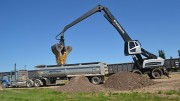The following is an edited excerpt from Norton Rose Fulbright’s summary of its 2015 Litigation Trends Annual Survey. The survey polled more than 800 corporate counsel representing companies across 26 countries. For more information and to download the full report, please visit www.nortonrosefulbright.com
Class action lawsuits were listed as the top litigation issue by respondents in the U.S., Canada and Australia. The U.K. ranked an overall increase in litigation — including frivolous lawsuits — as the top issue.
A quarter of all respondents reported at least one class or group action against their companies in the preceding 12 months, with survey participants from the U.S. comprising 80% of that number. And 71% of those who reported a class action had more than one filed against their companies in the previous 12 months.
U.S.-based respondents also reported a more litigious business environment than their peers, with 55% facing more than five lawsuits filed against their companies in the previous 12 months, compared with 23% in the U.K. and 22% in Australia. Just 18% of U.S. companies reported no lawsuits, compared with 42% in the U.K. and 36% in Australia.
Regulatory and investigations matters are a focus for in-house counsel, with 39% of respondents citing those issues as their top concern. Among companies with revenues of US$1 billion or more, 51% indicate they have one or more regulatory proceeding pending against them. Half of respondents indicate their company has retained outside counsel for assistance in a government or regulatory investigation. Across the entire sample, 44% of respondents indicate they have had at least one internal investigation requiring assistance of outside counsel in the previous 12 months.
In general, respondents expect the legal environment to grow in complexity. Overall, 25% of respondents anticipate litigation against their companies increasing in the next 12 months, compared with just 14% who predict it will decrease. Almost a quarter (22%) increased the number of outside firms on their rosters in the past year. Half of all respondents have spent more time during the last three years addressing regulatory requests or enforcement proceedings.
Respondents were given a list of more than 20 categories of pending litigation their companies faced over the past 12 months, and were asked to pick the top three to five. Contracts, labour/employment and regulatory/investigations received the most selections from respondents, followed by personal injury and IP/patents.
United States
Just over 50% of the survey’s respondents are from companies with headquarters in the U.S. The average U.S. company polled has 20 in-house lawyers to handle disputes.
The number of U.S. companies with an annual litigation spend of US$1 million or more jumped between 2012 and 2014. The share of companies with legal budgets of more than US$1 million increased to 69% from 52% in 2012. A total of 34% reported budgets of US$1 million to US$5 million, up from 26% two years ago.
Respondents also reported an increase in the percentage of U.S. companies with litigation budgets of US$10 million or more (25%, compared with 17% in 2012). Respondents with budgets of less than US$500,000 fell to 21% of the total, down from 31% in 2012.
Respondents identified a number of significant differences in the types of litigation that U.S. companies face compared with their peers worldwide. For example, personal injury litigation is significantly more prevalent in the U.S. than in other countries, with 21% of respondents selecting it as one of the most numerous types of cases they faced in the previous 12 months. That compares to just 15% in the survey overall.
In addition, IP/patents (18%) and product liability (17%) cases were more common in the U.S. than worldwide (13% and 11%).
Going forward, more U.S. respondents say regulatory/investigations are a top concern compared with the broader sample (48% to 39%). The percentage of U.S. respondents most concerned with contracts disputes declined to 29%, from 36% in the previous survey.
IP/patents disputes are of greater concern in the U.S. (30%) compared with all respondents (21%). Only one in 10 respondents in Australia, Canada and the U.K. listed IP/Patents among their top dispute concerns.
In addition, more U.S. respondents list class actions (25%) and product liability (18%) as top concerns, compared with the total sample (18% and 14%).
A total of 42% of U.S. companies reported being a party in one or more arbitrations over the past 12 months, slightly more than the 35% reported among all respondents. Arbitrations by U.S. respondents have remained steady since 2011, with no statistically significant change.
The U.S. reported the greatest incidence of one or more regulatory proceedings commenced against respondent companies (43%). This proportion has remained steady during the past three years.
Canada
Canadian companies average four disputes-focused lawyers, well below the total survey average of 16.3. Those small staff sizes are mirrored in Canada’s average litigation spending, with 62% spending less than US$500,000 per year — among the smallest average budgets reported.
Respondents from Canada reported far more labour/employment matters in the previous 12 months than the survey as a whole (49% to 37%), as well as higher numbers of company/commercial construction litigation (15% to 5% for the overall survey). But the number of product liability cases was much lower than the average (4% to 11%).
Canadian companies are also less concerned about regulatory/investigations and IP/patents than their peers in other countries (24% to 39% and 10% to 21%). A total of 33% of Canadian respondents said regulatory proceedings had been initiated against their companies in the previous 12 months, which is similar to the overall survey at 34%.
Infrastructure, mining and commodities
Infrastructure, mining and commodities companies ranked contracts as the most frequent area of dispute in 2014, with 57% of respondents selecting it from among the possible choices, compared with just 28% of their peers in other industries. That was followed by labour/employment at 27% and regulatory/investigations at 13%.
Contracts were also ranked as the top concern going forward, with 50% of infrastructure, mining and commodities respondents making that selection, compared with just 34% of overall respondents.
Infrastructure, mining and commodities respondents were also more concerned about company/commercial construction issues (21%) than their peers (8%).
This sector reported having fewer in-house lawyers to handle disputes than their peers (13.5 compared with 16.3).
Infrastructure, mining and commodities companies were among the most likely to have been a party to an arbitration in 2014, at 43%, compared with 26% of all respondents.





Be the first to comment on "Facts ‘n’ Figures: Norton Rose Fulbright tracks rise in legal disputes"